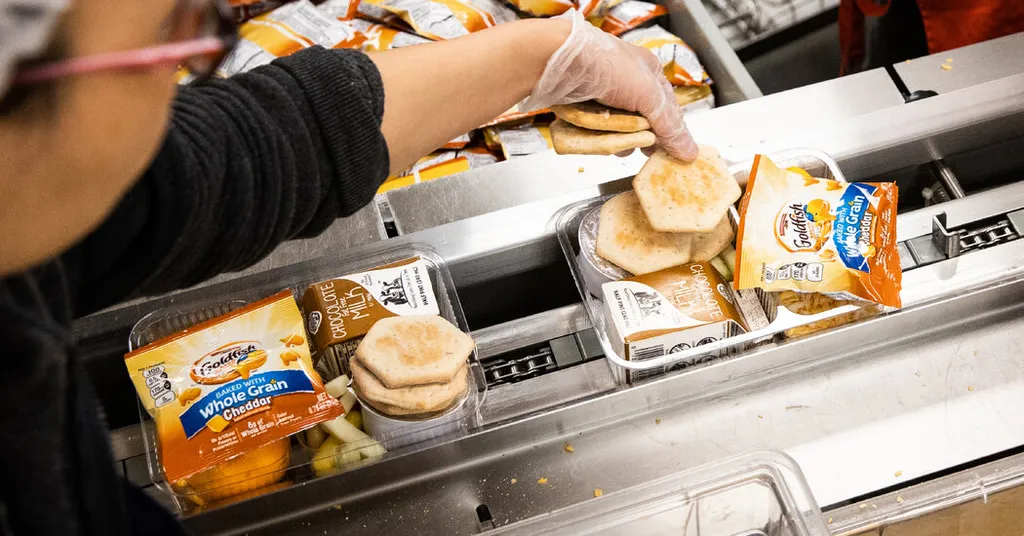California Governor Gavin Newsom has signed AB 1264 into law, marking a significant milestone in the nation’s approach to ultra-processed foods (UPFs). This landmark legislation not only creates a statutory definition of UPFs but also makes California the first state to ban certain UPFs from being served in schools. The enactment of AB 1264 comes on the heels of recent announcements from the US Department of Agriculture (USDA) and the Food and Drug Administration (FDA) that these federal agencies are collaborating to create a definition for UPFs.
The new law is noteworthy because it is the first time UPFs have been officially defined by law. Currently, there is no universally accepted definition of UPF, either in law or in science. However, several food classification systems attempt to define it. The most applied system in scientific literature is called Nova, derived from the Portuguese word for “new.” Created by researchers at the University of Sao Paulo, Brazil, Nova classifies foods into four categories based on the extent and purpose of industrial processing. These categories include unprocessed or minimally processed foods, processed culinary ingredients, processed foods, and UPFs. Nova defines UPFs as “formulations made mostly or entirely from substances derived from foods and additives, with little if any intact group 1 food.” Examples include soft drinks, sweet or savory packaged snacks, and pre-prepared frozen dishes.
California’s AB 1264 aims to make school meals healthier by prohibiting certain foods that meet the definition of UPFs from being served in public schools. This law is not the first time California has passed landmark legislation related to school food ingredients. In 2024, California was the first state to prohibit the sale of food and beverages containing synthetic color additives in schools. The following year, several states passed similar legislation under the “Make America Healthy Again” (MAHA) mantle. AB 1264, like the synthetic dye ban, could serve as a model for other states attempting to define and regulate UPFs.
To understand which foods are prohibited under AB 1264, it is essential to examine California’s definition of UPFs. The law defines UPFs as foods or beverages that contain a substance listed in the FDA’s Substances Added to Food database with a defined technical effect and either high amounts of saturated fat, sodium, or added sugar, or a non-nutritive sweetener. The FDA’s database includes food additives, color additives, and Generally Recognized as Safe substances. California’s definition applies to substances with specific technical effects, such as surface-active agents, stabilizers, thickeners, propellants, aerating agents, gases, colors, coloring adjuncts, emulsifiers, emulsifier salts, flavoring agents, adjuvants, flavor enhancers, and nonnutritive sweeteners.
A food or beverage must contain one of these substances with a defined technical effect and either high amounts of saturated fats, sodium, or added sugar, or a non-nutritive sweetener to meet the UPF definition. High amounts of saturated fat are defined as deriving 10 percent or greater of total energy from saturated fat. High sodium foods or beverages contain a ratio equal to or greater than 1:1 milligrams of sodium to calories. Added sugar products meeting the definition include foods or beverages with at least 10 percent of total energy derived from added sugars. Additionally, non-nutritive sweeteners are defined as substances with less than 2 percent of the caloric value of sucrose per equivalent unit of sweetening capacity.
The law clarifies that raw agricultural commodities, unprocessed locally grown or raised agricultural products, minimally processed prepared foods, class 1 milk, alcoholic beverages, medical foods, infant formula, and commodity foods specifically made available by the USDA do not qualify as UPFs. Furthermore, salt, sodium chloride, spices, other natural seasonings or flavorings, and natural color additives do not cause a food or beverage to be categorized as a UPF.
With the enactment of AB 1264, California sets a precedent for other states to follow in defining and regulating UPFs. The law’s impact on school meals and the broader food industry remains to be seen, but it represents a significant step forward in the ongoing effort to promote healthier eating habits and improve public health.

